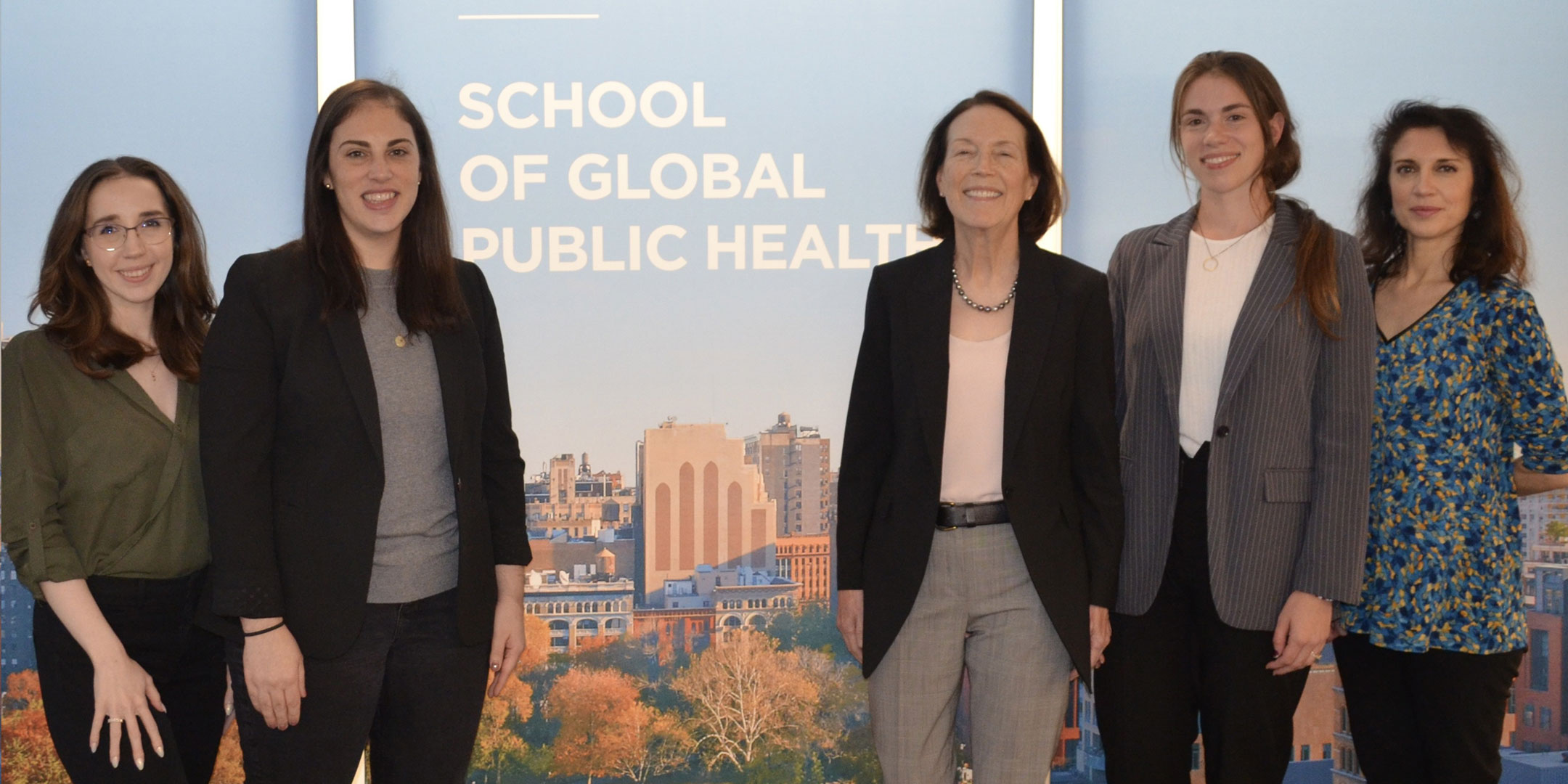
The emerging science of intervention optimization aims to maximize positive health impact. Researchers at NYU’s Center for Advancement and Dissemination of Intervention Optimization are leading the charge.
Imagine a future where scalable, sustainable and efficient clinical responses to society’s most intractable health challenges are the norm, not the exception. That's the vision driving researchers at NYU School of Global Public Health's Center for Advancement and Dissemination of Intervention Optimization (CADIO).
Under the leadership of Dr. Linda M. Collins, professor and co-director of CADIO, who co-created intervention optimization and co-authored the first journal article on the paradigm 20 years ago, researchers are applying the emerging approach to critical health concerns including cancer prevention, substance abuse, smoking cessation, youth mental health issues and more. "Intervention optimization has the potential to improve public health across the board and make better use of healthcare dollars, by enabling researchers to produce more effective, affordable, scalable, and efficient interventions," says Dr. Collins.
So, what is intervention optimization?
More than mere methodology, it’s a paradigm for engineering behavioral, biobehavioral, biomedical, or socio-structural interventions to have the greatest impact. In the classical paradigm for intervention development and evaluation, investigators rely solely on conventional randomized control trials where various components are thrown into the proverbial black box, making it hard to tease out the effectiveness of the individual components or combinations thereof. By contrast, intervention optimization avoids those shortcomings through a principled, deliberative, iterative process. Ultimately, this new paradigm enables researchers to develop effective public health interventions that are practical to implement, and justify the effort and expense they require.
While that approach may sound obvious on the surface, it’s a dramatic break from the status quo.
"Why we do what we do is that, on average, it takes 17 years for an intervention to move into practice—that is a very long time," says applied intervention scientist Dr. Kate Guastaferro, assistant professor and co-director of CADIO. "And even then, it's estimated only 14 percent of the interventions that are created actually reach the people they are designed to affect."

For Dr. Guastaferro and her colleagues, these striking statistics are a call to action. "Those numbers motivate me as an intervention scientist," she says. "I want to create interventions that actually do good for the people that I'm trying to help."
Historically, she points out, though intervention scientists have created complex interventions to solve the greatest public health problems, they’ve struggled to balance effectiveness with real-world implementability, leading to diminished results.
That's where intervention optimization comes in. "A central feature is the optimization trial," says quantitative methodologist Dr. Jillian C. Strayhorn, assistant professor and associate director of CADIO. "These trials generate the empirical information we need to determine which components 'make the cut'—for example, because they contribute to effectiveness in ways that justify their resource demands."
MOST QUITS
One exciting NIH-funded optimization trial is led by Dr. Jennifer Cantrell, associate professor and chair of early career faculty outreach of CADIO. This study, MOST QUITS, is currently addressing the adverse health impacts of cigarette smoking on people living with HIV with the goal of delivering optimized cessation packages to the community. Dr. Cantrell's team is rigorously testing four components (motivational interviewing, peer mentoring, a text-messaging program and pharmacotherapies) for eventual implementation into HIV clinical care.
"MOST QUITS looks at how these different interventions, and the ways they interact when combined, support quitting," explains Dr. Cantrell. "Part of what makes this study unique is the intervention optimization approach. From the start, it takes into account the constraints of the settings where interventions will be implemented, such as HIV clinical care. This helps us find cessation approaches that balance effectiveness, affordability and feasibility for real-world practice."
The study is expressly designed to deliver real relief to a health-compromised community. The study is a direct response to the National Cancer Institute’s (NCI) call for smoking research that "optimizes intervention effectiveness, implementation and sustainability."
While people living with HIV have made remarkable gains in health and life expectancy over the past decades due to advancements in science and public advocacy work, the population remains vulnerable. "We really don't want to see these gains eroded by smoking," says Dr. Cantrell. "Smokers living with HIV lose about 12 years of life compared with those living with HIV who do not smoke, so optimally effective cessation interventions broadly available to this group of smokers are critically needed."
While intervention optimization is on its way to becoming a disruptive powerhouse—there are at least 400 NIH-funded studies in progress or completed using the paradigm—its potential is still in its infancy. To date, NYU GPH is one of the only graduate programs in the country training researchers—including NYU alumni and current students—in the field of intervention optimization.
Rachel Warshaw, research project manager, earned her MPH from NYU GPH in 2024, before joining the MOST QUITS trial. Today, she oversees study activities, which includes scheduling participants, administering surveys, collecting data and training and managing staff, collaborating closely with Dr. Cantrell. She credits the content and rigor of her prior NYU GPH coursework for preparing her for the position.
"As a student in the MPH program, I was able to gain a broader understanding of the various aspects of public health," she says. "I learned how different interventions and programs to address public health problems are developed, implemented and evaluated."

First-year MS Biostatistics student Emma Hughes, recruitment and cohort coordinator, is getting hands-on experience tracking systems to ensure the trial is collecting and maintaining reliable, high-quality data and working to recruit and enroll participants through interviews, surveys, and community outreach. Given that up to 75 percent of people living with HIV in the United States are receiving clinical care in some form, they are an ideal population to target with interventions. Over a rolling multi-year period, Emma will help MOST QUITS enroll 500 trial participants, tracking them over a period of six months.
"It has been especially valuable to work directly with participants," says Emma. "It reminds me that every data point I work with represents a real person with real challenges. This opportunity allows me to appreciate the human side of public health research, showing that the numbers we analyze are reflections of people's lives and the conclusions we draw can and will have a direct impact on those lives."
Impact is the goal of applied science, but it's profoundly baked into the premise of intervention optimization, which incorporates concepts from a wide range of disciplines—behavioral science, engineering, public health, quantitative and qualitative methods, economics—in order to produce meaningful interventions that improve public health outcomes.
"Intervention optimization enables researchers to produce scientifically-based interventions that can be deployed promptly to improve public health and well-being, and save lives. It's a game-changer that is rapidly being adopted worldwide," says Dr. Collins. Now, with intervention optimization, a new level of affordability, scalability, and efficiency is on the horizon. Even better, since all types of interventions can be optimized—behavioral, biobehavioral, biomedical, social-structural, and more—the sky is the limit in terms of the health issues intervention optimization can impact.
One thing is certain: CADIO and NYU’s School for Global Public Health will be leading the charge.
On the Horizon
Beyond smoking cessation, CADIO’s affiliates are applying intervention optimization across multiple public health challenges. Here are two more areas where NYU is working to make an impact:
Youth Mental Health Treatment
Young adults with serious mental health issues face an increased risk of ending treatment prematurely. Dr. Kiara L. Moore, assistant professor at NYU Silver School of Social Work, is using MOST to devise developmentally and culturally appropriate interventions that improve engagement in treatment and reduce mental health disparities.
Cervical Cancer Prevention
Corrina Moucheraud, associate professor and co-director of the Global Center for Implementation Science at NYU GPH, is focused on the delivery of effective, equitable health services globally. Using MOST, she is optimizing implementation strategies to support providers in recommending the HPV vaccine to adolescent girls and young women living with HIV in Malawi.
Learn more at cadio.org